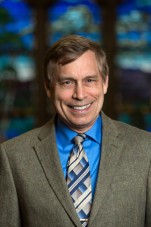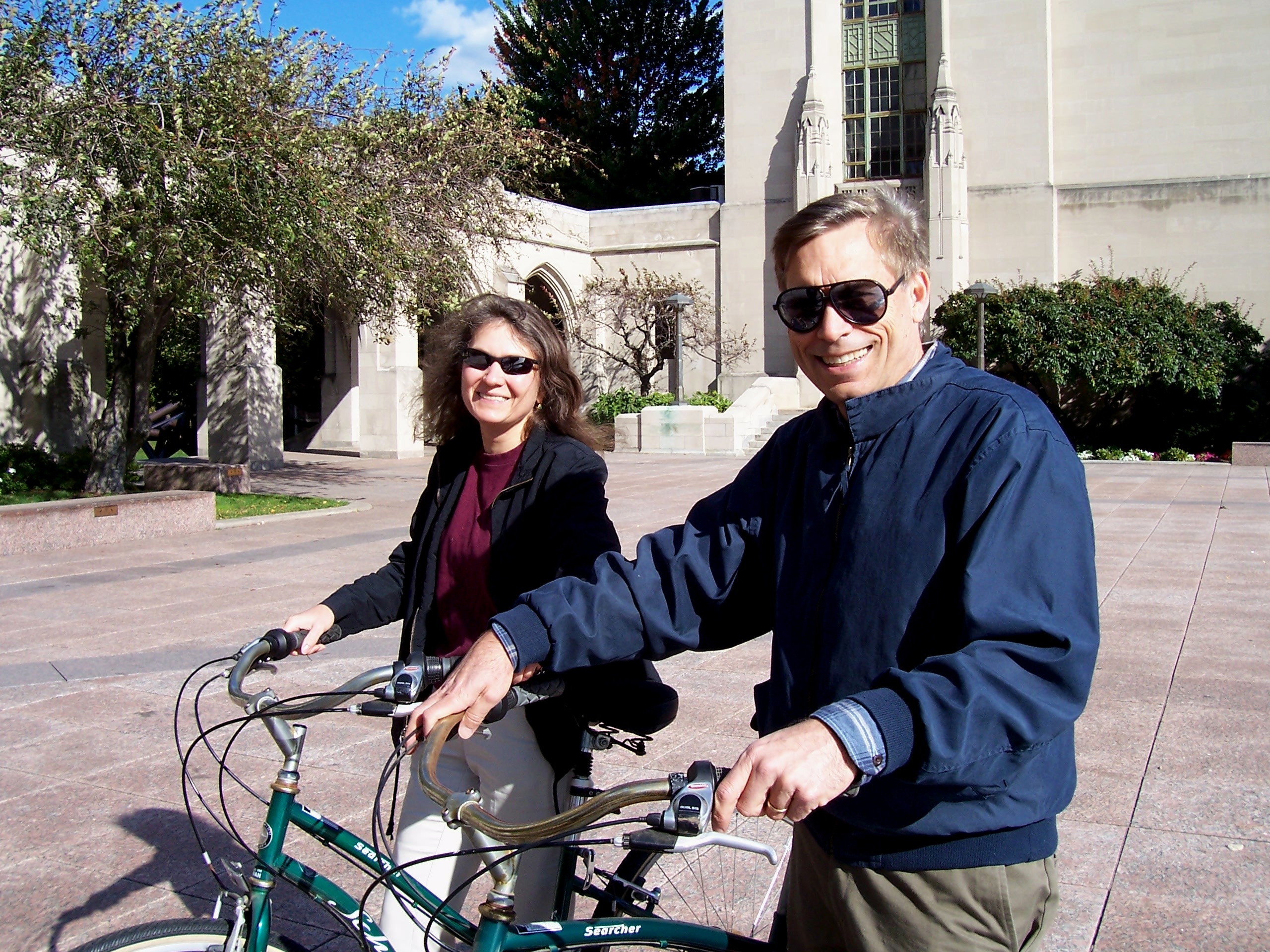Alan Marscher
Professor of Astronomy
| Department of Astronomy/Institute
for Astrophysical Research
Alan Marscher Professor of Astronomy |
 Astronomy Office: Room CAS 418, 725
Commonwealth Ave.
Astronomy Office: Room CAS 418, 725
Commonwealth Ave.
E-Mail: marscher@bu.edu
Phone: Astronomy office: 617/353-5029
Address: Institute for Astrophysical Research, Boston University,
725 Commonwealth Ave., Boston, MA 02215
Education: Ph.D. 1977 University of
Virginia (Advisor: Dr. Robert L. Brown, National Radio Astronomy
Observatory). M.S. 1974 University of Virginia; B.S. 1973 in
Engineering Science, Cornell University
Postdoctoral Research: 1977-78 National Academy of Sciences/National Research Council Resident Research Associate at NASA Goddard Space Flight Center; 1978-81 Postgraduate Research Physicist, University of California, San Diego
Research specialties: quasars, active galaxies, high energy astrophysics, fine structure of interstellar clouds; radio, infrared, X-ray, and gamma-ray astronomy.
Papers in Conference Proceedings and Other Publications
Curriculum Vitae (PDF file, last updated 1/11/2024 (see also summary below)
Go to main page of the Boston University blazar group
OK, I admit it, the photo above was taken ca. 1985. I really look like the photos below now:


 With Svetlana
With Svetlana
Teaching
I have taught a number of Astronomy courses for non-majors, majors, and graduate students while at Boston University.
Nearly
every year for the past decade, I have taught AS109 Cosmology, an
introductory course for mostly non-science majors. I have written a
textbook for the course entitled From Nothing to Everything: The
Story of Our Universe, the e-book version of which you can download without charge. My effort
while writing and updating the book has been partially supported by a
grant from the National Science Foundation.
During
most years from 1989 to 2014, I taught in the Core Curriculum of the College of Arts and
Sciences. The course was CC 105, The Evolution of the Universe and the
Earth. I was the lead architect of the course, but a number of other
professors contributed substantially.
For many years, including 2013 and 2014, I was the lead instructor of
the course. In 2013-2014 I also served as an associate director of the
Core program. My textbook From Nothing to
Everything: The Story of Our Universe served as the text for the
course in 2013 and 2014. It is being adapted for the revised Core
science courses.
I compose pop songs for the course and perform them in my lectures. I have recorded, and converted to MP3 format for downloading, a number of my science songs. I also perform the songs at astronomical meetings and parties, and at the annual College of Arts and Sciences/Core Curriculum Talent Review. I have composed and recorded several dozen other songs unrelated to science as well. Most of these are available at soundclick.com.
I am the proud recipient of a 2014 Metcalf Award for Excellence in Teaching by Boston University. Earlier, in 1998, I was honored with the Gitner Award for Distinguished Teaching by the College of Arts and Sciences. In 1999, Phi Beta Kappa, Epsilon chapter of Massachusetts at Boston University bestowed honorary membership on me. In 2003, I was given the honorary title of Distinguished Member of the National Society of Collegiate Scholars.
Research
Note: Rather than read the following brief synopsis, you can go to the main website for my group's research program.
My research
group studies the extremely energetic plasma jets that emanate from a
class of active galactic nuclei called "blazars" (radio-bright quasars
and BL Lacertae objects, whose brightness tends to be highly variable
and whose continuum spectra are non-thermal). The general consensus of
the field is that ultra-massive (over a billion solar masses in some
cases) black holes residing at the center of many galaxies power
blazars as they accrete matter from their surroundings. The black holes
swallow most of the gas and dust, but expel a small fraction in winds
and jets along the rotation axes, at flow speeds very close to the
speed of light. Such relativistic motions create illusions of
faster-than-light speeds and beams the radiation emitted such that
observers viewing the jet almost along the axis measure a very high
brightness that varies on timescales as short as hours. The work of my
group focuses on monitoring the changing brightness at radio, infrared,
optical, X-ray, and gamma-ray frequencies, linear polarization at
microwave, infrared, and optical frequencies, and the evolving
structure of the jet on sub-milliarcsecond scales at millimeter
wavelengths. Telescopes used currently include the Fermi Gamma-ray
Space Telescope, the Very Long Baseline Array (VLBA), the Swift
satellite observatory, Lowell Observatory Perkins Telescope, the
Liverpool Telescope, Maria Mitchell Observatory, the Calar Alto
Observatory, the Crimean Astrophysical Observatory, St. Petersburg
State University telescope, and a number of other telescopes.
In the recent past, we have used the Hubble Space Telescope, the
Chandra X-ray Observatory, the Spitzer Space Telescope, the Rossi X-ray
Timing Explorer, the Herschel Space Telescope, the Herschel Space
Observatory, the XMM-Newton satellite, andthe INTEGRAL satellite.
Dr. Svetlana Jorstad from my research group and I are active members
of the international Event
Horizon Telescope
(EHT) collaboration. The EHT is an international array of
high-precision radio dishes that are arranged to observe together for
about a week each year to act as a Very Long Baseline Interferometer at
a wavelength of about 1 mm. The wide separation of the dishes and short
wavelength provide an angular resolution of about 15 microarcseconds,
sufficient to make images of the regions immediately surrounding the
super-massive black holes at the center of our Milky Way Galaxy and of
the relatively nearby (54 million light-years), giant elliptical galaxy
M87. Six papers presenting the results from the first set of
observations (spring 2017) were published in the Astrophysical Journal
Letters on 10 April 2019, coinciding with a press conference in
Washington, DC, sponsored by the National Science Foundation (NSF). In
May 2019 the NSF bestowed upon the Event Horizon Telescope
Collaboration the inaugural Diamond Achievement award for capturing the
first image of a black hole shadow, in the galaxy M87. See our web page on the black hole
shadow image.
The collaboration has also been awarded the 2020 Breakthrough Prize in
Fundamental Physics and the 2020 Rossi Prize, the latter of which was
bestowed by the High Energy Astrophysics Division of the American
Astronomical Society.
Dr. Jorstad and I are also part of the Imaging X-ray Polarimetry Explorer
(IXPE) mission, as members of the Technical Working Group on Blazars
and Radiogalaxies, which I chair. IXPE is a joint mission of NASA and
the Italian Space Agency designed to measure the polarization of cosmic
sources at photon energies from 2 to 8 keV.
My group also engages in a theoretical program focused on the radiative processes that occur in the jets of blazars. The main goal is to provide models that can be used to interpret multifrequency monitoring observations of blazars in the hopes of figuring out the physics of jets: what produces them (what evidence can we obtain that it is really an accreting supermassive black hole?), what focuses and accelerates their flows to speeds very close to the velocity of light (twisting magnetic fields, gas pressure, or radiation pressure?), what accelerates the electrons to ultrarelativistic energies (shock waves - transverse to the jet axis or oblique? turbulence?), and what processes affect the emission (bends in the jet, accelerations in the flow, precession?).
Administration
From 2017 to 2019 and 2023-24, I was Associate Chair of the
Astronomy Department at Boston University. In 2015-16, I served as
Acting Chair of the Astronomy Department.
From 2011 to 2015, I served as the Director of the Institute for Astrophysical Research at Boston University. The IAR promotes research, education, and public outreach in astrophysics at BU. It also administers external funding grants in astrophysics as well as Boston University's partnership with Lowell Observatory for use of the 1.8-meter-diameter Perkins Telescope outside Flagstaff, Arizona.
Between 2003 and 2007, I served as the Director of the Center for Excellence & Innovation in Teaching (CEIT) at Boston University. The CEIT operates a variety of programs designed to assist instructors who wish, for example, to improve their classroom performance, modernize their teaching techniques (e.g., through use of the web), or administer their courses more effectively.
From January 1999 to June 2003 I served as an Associate Dean in the College of Arts and Sciences at Boston University (half-time), with primary responsibility for faculty issues. Among my main duties were design and oversight of the College web site, running of orientation programs for new graduate teaching fellows and new "adjunct" faculty, coordination of continuing programs of language instruction for international graduate teaching fellows, identifying physical problems in classrooms that need to be fixed and acting as a liaison between instructors and Media Group, formation of a panel to determine recipients of College teaching awards, compilation of grading statistics in Arts and Sciences courses, and providing guidance to departmental chairs and to faculty.
I served as chairman of the Department of Astronomy from 1986 to 1997. During that time, the size of the academic faculty grew from 8 to 15 members, while that of the research faculty increased from 1 to 7.
Service: Committee Work
I have served on a number of professional committees. These include, among a number of others:
I have served on a number
of University committees as well, including the College of Arts &
Sciences Academic Policy Committee (1988-90, chair in 1988-89, and
again from 2017 to 2020).
Go to main
page of the Boston University blazar group